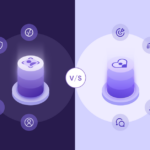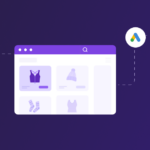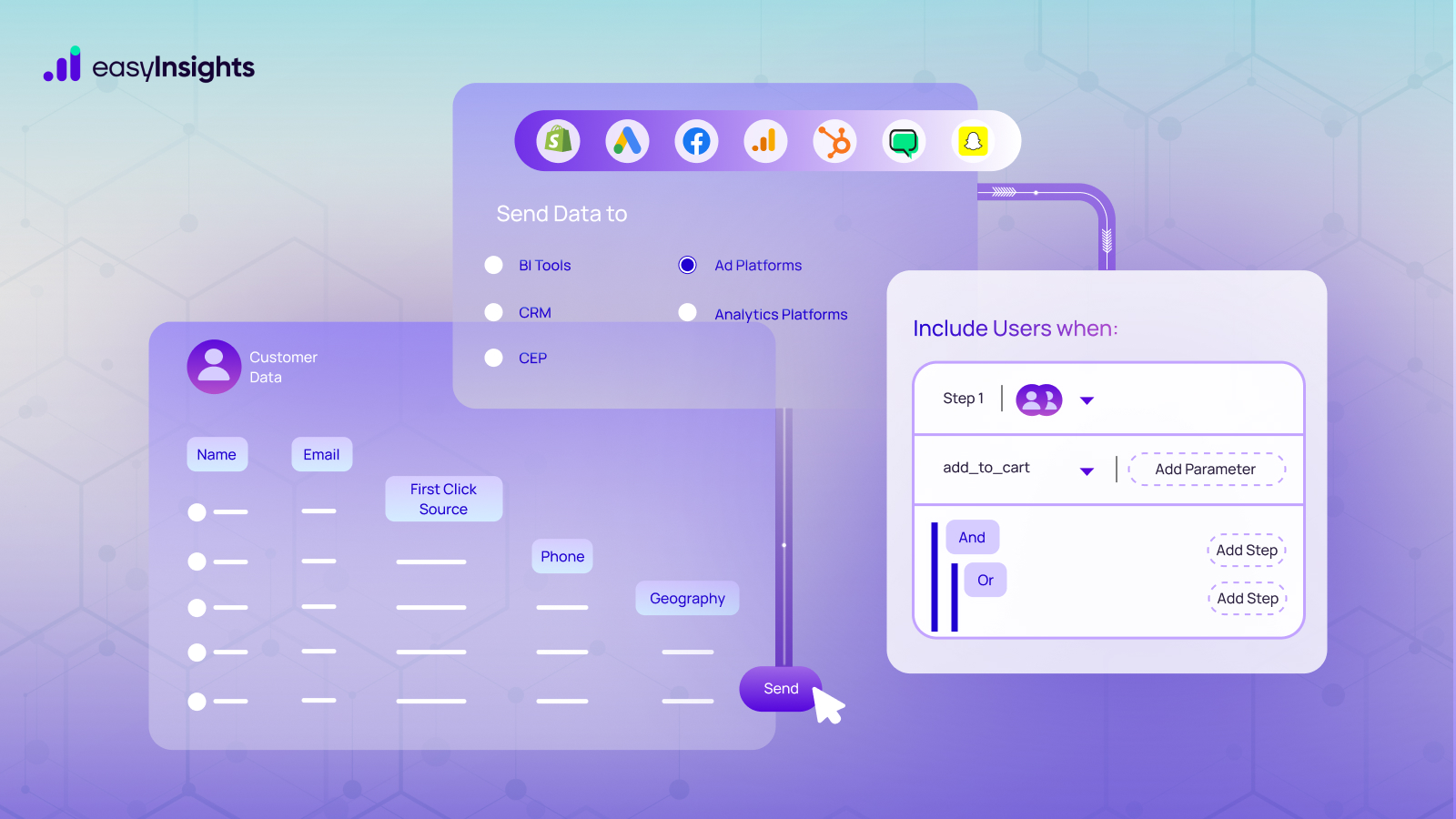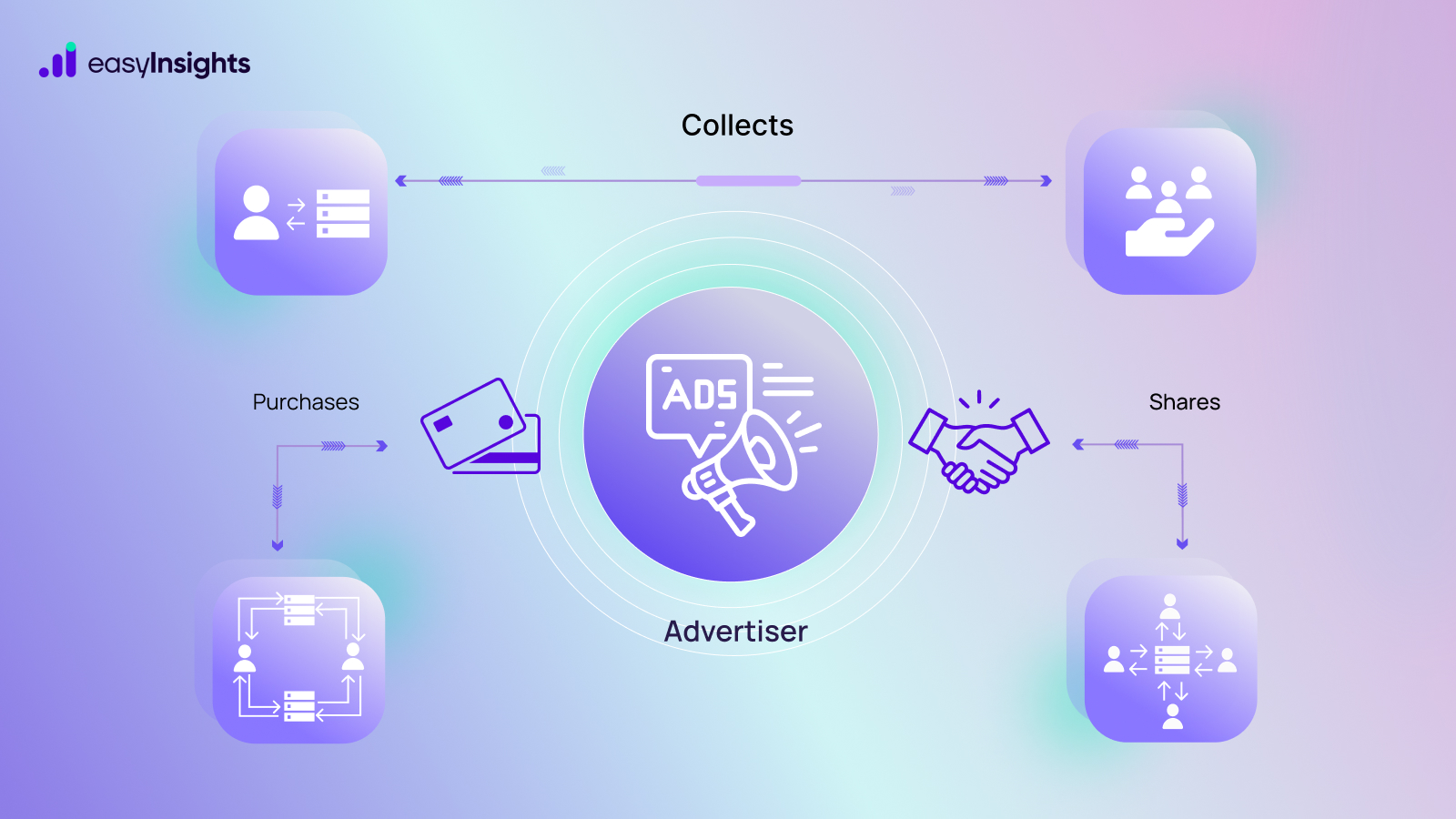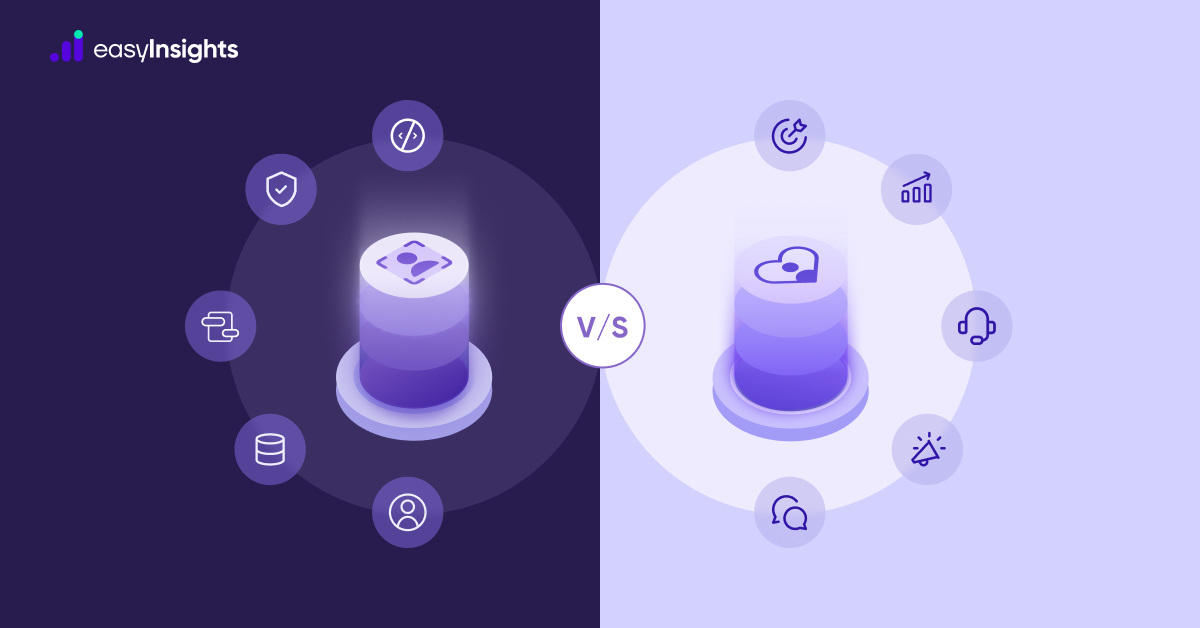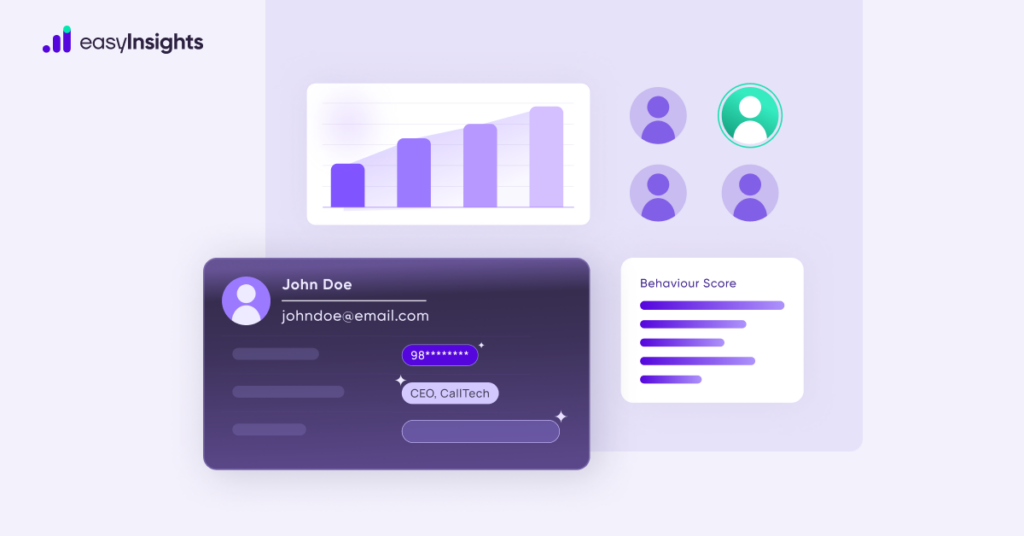
Data enrichment involves augmenting the quality of existing customer data by integrating newer data from additional sources. It helps you add extra contextual information to the data needed to understand customers and their behavior better.
At a time when almost 20% of businesses lose customers because of inaccurate and incomplete data, data enrichment plays a crucial role in obtaining detailed and accurate customer insights that can significantly enhance marketing strategies and outcomes.
So, join us as we explain what data enrichment is and how you can use it to improve marketing performance.
Jump ahead to:
What is Data Enrichment?
Data enrichment is a process that enhances and refines raw data, making it more actionable for businesses. By integrating data from additional sources, data enrichment adds depth and context to existing customer data, allowing for more informed decision-making.
The enrichment process generally entails integrating various internal first-party data sources, like CRMs, web and mobile analytics, transactional data, feedback and reviews, social interactions, and more. Another way to enrich data is to collect information from external sources and append it to your first-party data. These sources include your partner and affiliates, data syndication platforms, and public sources like government records, open data portals, and social networks.
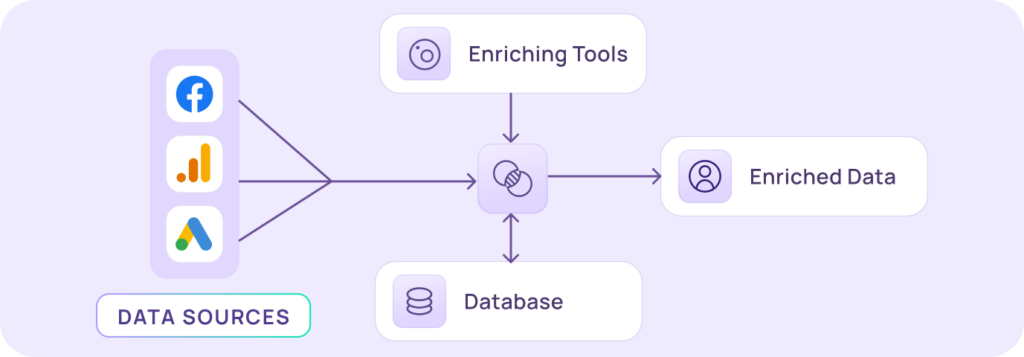
Data Enrichment Vs. Data Cleaning
Data enrichment is a unique concept different from data cleaning, but the two are closely related. Data cleaning or cleansing is the process of identifying and removing inaccurate, corrupted, duplicated, or incomplete data within a dataset.
For instance, you may split the “full name” column into first and last name columns so you can use first names for your personalized campaigns. Similarly, your system may have multiple records for the same customers. Cleaning data would mean deleting the duplicate or merging the two records.
Think of data cleaning as a preliminary step in a broader data enrichment process. Once the data is clean and you have a unique identifier for each customer profile across your entire data infrastructure, you can go ahead and enrich data from all disparate sources.
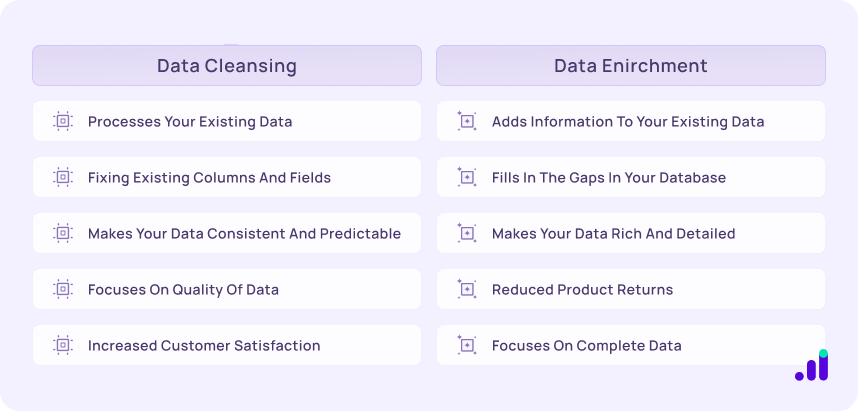
Additional Read: Google’s Third-Party Cookie Purge: It’s Time for Cookieless Marketing
How does Data Enrichment help Marketers?
For marketers, data enrichment is like switching from a blurry photo to HD quality. Instead of working with half-baked customer data, you get a clear, detailed picture of your audience. This helps in several ways:
1. Better Personalization
With enriched customer data (like age, location, past purchases, or interests), marketers can send highly targeted campaigns. Instead of blasting the same email to everyone, you can greet customers by their first name, recommend products they actually want, or show ads that match their lifestyle. Personalization powered by data enrichment increases engagement, CTRs, and conversions.
2. Improved Customer Segmentation
Data enrichment allows you to group customers into meaningful segments. For example, you can separate “frequent buyers” from “one-time shoppers,” or “budget-conscious” from “premium buyers.” This segmentation ensures your marketing message fits the right audience, boosting ROI.
Similarly, data enrichment gives your sales team the extra context they need to rank prospects, like purchase intent signals, online behavior, technographic data, etc. They can better gauge if a lead fits the ideal customer profile and target those who show the highest conversion probability.
3. Smarter Retargeting & Remarketing
With enriched data, marketers can understand browsing patterns, abandoned carts, or product interests. This makes retargeting campaigns sharper—for example, showing someone an ad for the exact shoes they left in their cart rather than random products.
4. Higher Lead Quality
Data enrichment improves lead scoring by adding context. Instead of just having an email ID, you’ll know the lead’s job title, company size, or buying capacity. This helps sales teams prioritize high-value leads and reduces wasted effort.
5. Cost Optimizations
When you enrich purchase history and customer behavior data, you can recommend relevant products. For example, someone who bought a laptop can be offered accessories or warranties. This increases average order value (AOV) and customer lifetime value (CLV).
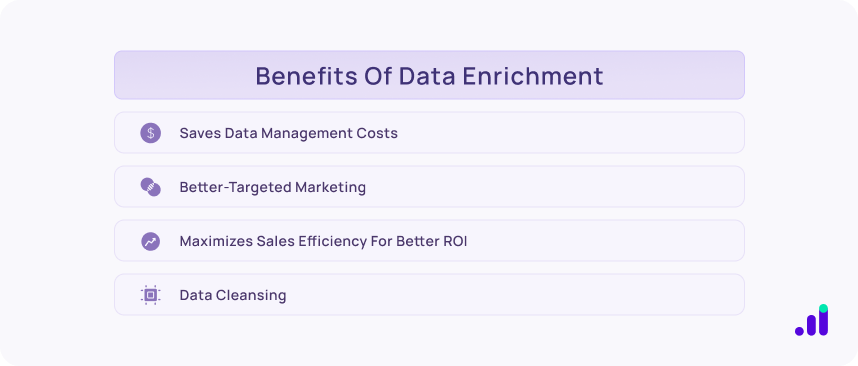
These multifaceted advantages of data enrichment underscore its critical importance in achieving broader marketing goals. Whether the objective is to drive conversions, increase sales, or maximize customer lifetime value, data enrichment serves as a key enabler, transforming raw data into a strategic asset that propels marketing success.
How is Data Enrichment done?
Here’s how you can start enriching data at your workplace:
1. Identify Sources of Data
First and foremost, identify all your online and offline sources of customer data. These can include your website, mobile apps, POS systems, surveys, etc. Also, review the collected data to identify inaccuracies and gaps you want to fill with enrichment.
2. Select Data Sources for Enrichment
Once you’ve identified your data sources and possible gaps, you can easily choose sources to enrich your collected data. First, look at internal sources like your data warehouse, CRM, ERP, and analytics tools. Then, identify external data sources that can complement your first-party data, including public databases, social media, third-party data providers, and more.
3. Invest in a Data Integration Tool
Next, you’ll need a solution to collate all your internal and external data and create a customer 360. Most brands today rely on a customer data platform (CDP) to accomplish this task. This software integrates with your existing data infrastructure, allowing you to enrich data and store unified customer profiles in your data warehouse.
Additional Read: The Relevance of Composable CDPs – Marketer’s POV
4. Activate Data
After enriching your customer data and creating unified customer profiles, you can finally make it available on your business applications. You can use CDP’s reverse ETL pipelines to sync enriched data downstream to CRMs, email automation platforms, and other tools your marketing team relies on.
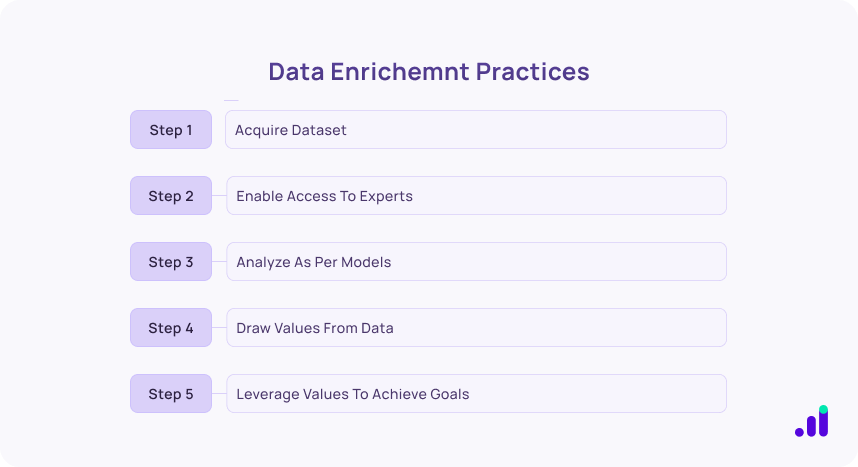
Enrich Customer Data with EasyInsights
Data enrichment transforms marketing from a game of guesswork into a strategic, insight-driven endeavor. By deepening their understanding of customers, businesses can craft effective marketing strategies that genuinely resonate with their audience.
Ready to enrich data? Check out EasyInsights, a composable CDP. EasyInsights lets you enrich your data using attribution and intent data. Moreover, you can merge first-party and third-party data to build reusable customer 360 profiles.
Book a demo today to see EasyInsights in action!
Additional Read: How Data Activation Will Transform Performance Marketing In 2024


